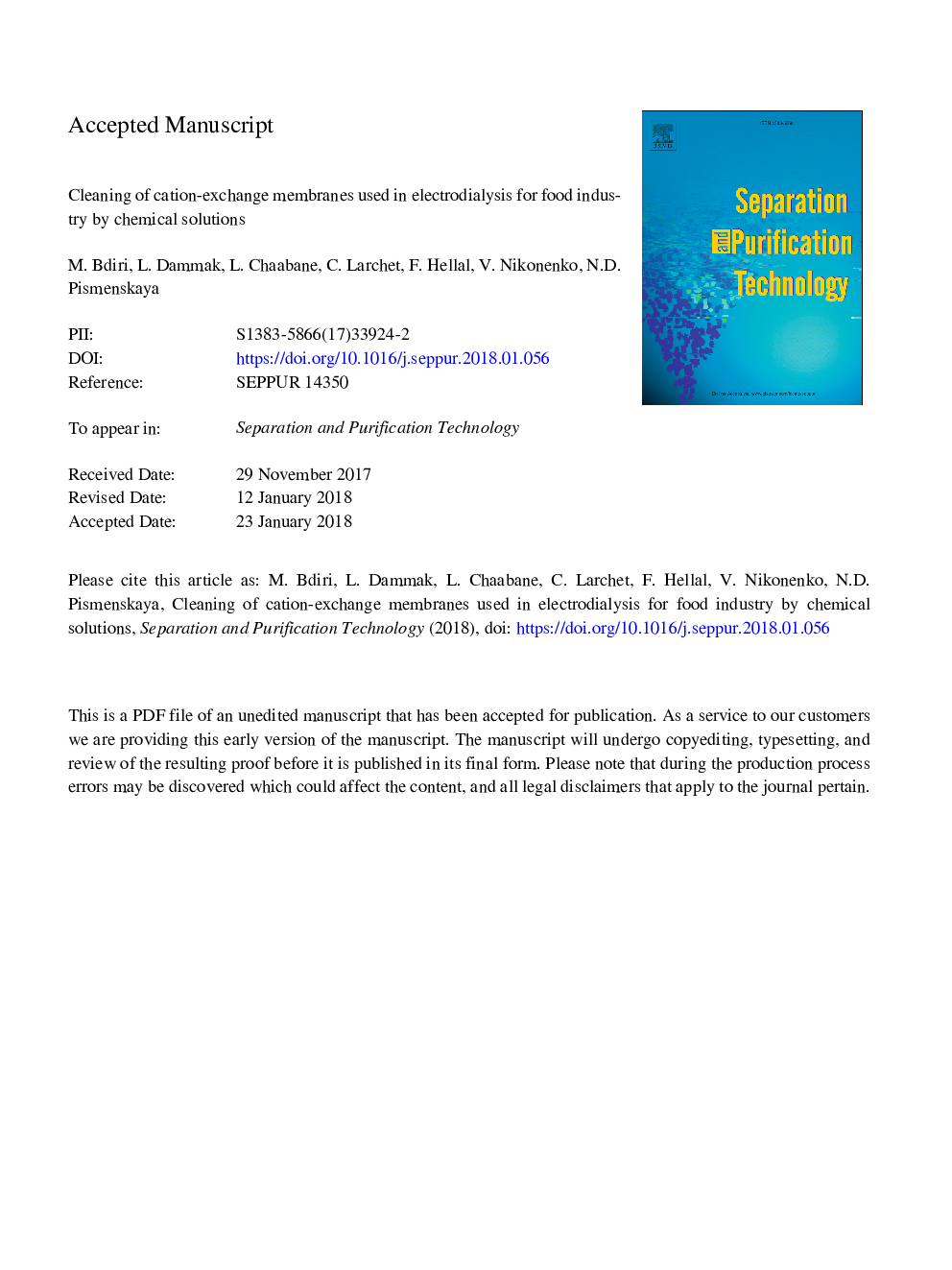| Article ID | Journal | Published Year | Pages | File Type |
|---|---|---|---|---|
| 7043841 | Separation and Purification Technology | 2018 | 36 Pages |
Abstract
A batch of new cation-exchange membranes (CEM(n)) and three batches of used cation-exchange membranes (CEM(u)) at various use durations, from different electrodialysis (ED) units used in food industry, were characterized to evaluate the effects of prolonged use and organic fouling on their microstructure. Different characterization methods were experimented: ion-exchange capacity (IEC), thickness (Tm), conductivity (km), contact angle (θ), water content (WC), volume fraction of the inter-gel solution (f2), tensile strength tests, FTIR, structural and elementary SEM analysis and morphological analysis by optical microscopy. Non-aggressive, easy and economic cleaning strategy was tested in the ex-situ static mode. Three solutions (35â¯gâ¯Lâ1 NaCl, reconstituted seawater and a water-ethanol mixture) were used as regenerative solutions, where the membranes were soaked from 2 to 120â¯h. The efficiency of the cleaning procedures were evaluated, for each sample of treated membrane, by following km, IEC, θ, and f2 as functions of the cleaning time in order to judge the recovery of their physicochemical properties. The water-ethanol cleaning method was found to be the most efficient for these membranes. This method leads, first, to significant increases in km, IEC and f2 (at least 47%, 26% and 63%, respectively after 120â¯h) which indicates the effectiveness of internal cleaning, and second, to a decrease of about 15% in θ (after 120â¯h), that confirms the stripping of a part of the external fouling layer. We have used the microheterogeneous model to demonstrate the progressive increase of f2 as a function of the cleaning duration with the water-ethanol mixture.
Keywords
Related Topics
Physical Sciences and Engineering
Chemical Engineering
Filtration and Separation
Authors
M. Bdiri, L. Dammak, L. Chaabane, C. Larchet, F. Hellal, V. Nikonenko, N.D. Pismenskaya,
